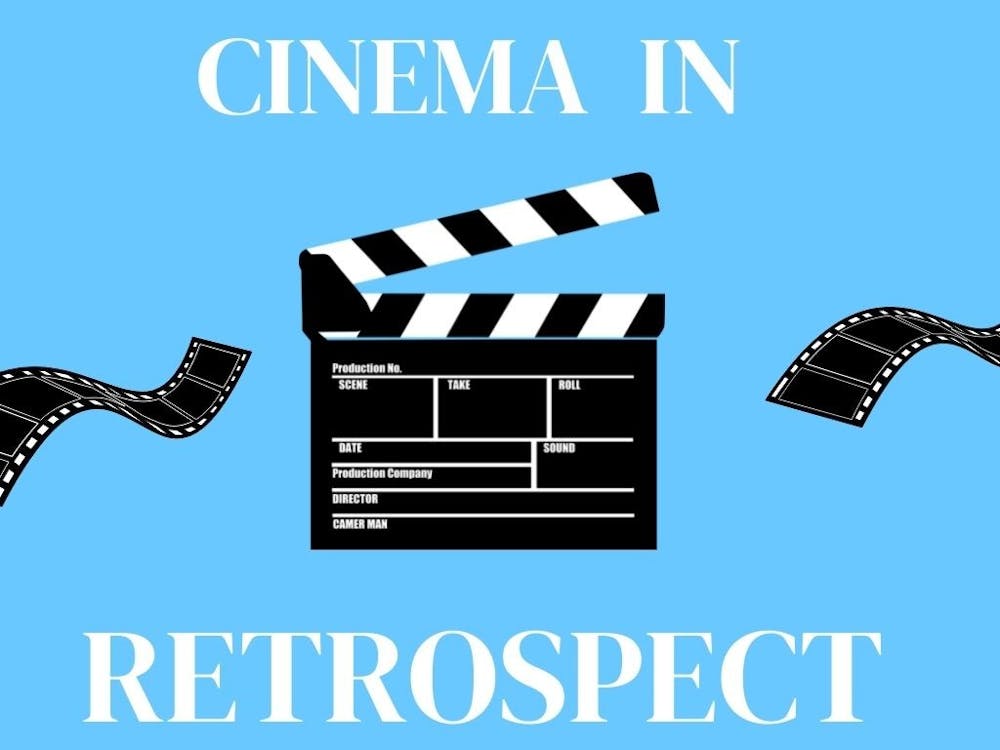Editor's note: The views and opinions expressed in this article do not reflect those of The Collegian.
The cultural hegemony of the Hollywood narrative form is by no means a mystery. So pervasive is it, in fact, that in its being exported internationally, it has largely become the global default. Although its exact specifics are somewhat interchangeable, it most consistently is defined by its plot structure, framing devices and system of causality.
The conventional Hollywood film follows a double plot that is split between the poles of work and romance. The main character is pulled between the demands of their occupation and the desires of their heart and must somehow find a resolution. In order to create tension, a discrete deadline is imposed on the characters or the world that could be a fast-approaching payment or submission date or perhaps the characters’ need to rush against to clock in order to stop an ill-matched marriage. Finally, these stories are governed by a system of causality. Almost every event shown in a Hollywood movie is in service of another one — usually in the form of correlating causes and effects. Some system of factors launches the characters as they are at the beginning of the movie to how they will be left at the end — endings which are understood to be the ultimate effect of whatever the initially illustrated cause was.
Importantly, however, is the fact that this mode of storytelling was nursed almost exclusively on a steady stream of hegemonically affirming images. Heteronormative white men pining after a well-lit — and equally heteronormative — white woman were the dominant protagonists of the original Hollywood films. They were stories nested within the deepest concentric circles of oppression — etched in systems of patriarchy, white supremacy and capitalism. This is not to say that Hollywood narratives have never explored marginalized stories or perspectives — given how long the institution has been around, of course they have — just that the rootedness of such a history predisposes the medium to certain perspectives. The Hollywood plot structure was designed to tell white, male stories, and so naturally, it formally aligns with such.
Where, then, do artists from historically oppressed communities turn to tell their stories? The answer, as provided by Ousmane Sembène in his film, “Black Girl,” is lyricism. The 1966 Senegalese film is radical in many ways — not only in its content and its images but especially in its lyrical delivery. “Black Girl” tells the story of Diouana, a young woman from Senegal who has been trafficked into France to work as an unpaid maid for a middle-class French family. The main chronology of the film follows Diouana from when she first arrived in France until her premature death there.
Despite Diouana being locked up every day in the numbingly white walls of an apartment, she is nevertheless able to add a piercing texture to her life and the film via her allegiance with reminiscence. While the present day unfolds in a bleak forward moving chronology, Diouana’s memories of Senegal spiral out with lyrically fluid freedom. The wafting nature of her memories not only shatter her cage of mundanity but also threaten the integrity of the systems from which such a structure had been forged — the hierarchy and narrative-prone practices of colonialism and white supremacy.
The film directly dictates as much at several points. For example, one night when Diouana’s captors have friends over for dinner — while she is being forced to tend tirelessly to their culinary demands — the topic of the African race comes up in conversation. The guests jokingly toss around their respective theories as to what being born African entails for a person — pressing upon the same “genetic” causalities as any other garden variety eugenicist. Another example comes when Diouana’s captors attempt to dupe her — unsuccessfully — into seeing herself as the effecting agent of blame in her circumstances. They spin up narratives about how her mother is suffering dearly at home and that if Diouana only committed to working harder, her family would be able to make it through.
In the face of all the cruelty and abuse she is subjected to, Diouana persists — not in laboring but in indulging in her self-love. No matter how hard things get, she never shies away from dipping back into the embracing reservoir of homely lyricism that her memories represent. The radicalism of these moments is emblemized both by their disruption in the film’s narrative flow and their resistance to the oppressiveness of her current circumstances. By reflecting on and cherishing her home and family, she is actively not providing labor to the exploiting family.
"Black Girl" embodies lyricality not only in its patterns of narrative but also through its sonic environment. While the film is only about an hour long, the entire runtime is backed by an ever-beating musicality. An Indigenous pulse runs through the film, streaming out with an equally rhythmic and jazzy passion. Its liveliness reaches its zenith whenever the focus shifts back to Senegal — almost as if Indigenous spaces are the source of the emanating music. By persisting against narrativizing conformity, lyricism implicitly becomes radical.
The same way that the education system has been weaponized against indigenous populations — by attempting to eradicate native culture and tongues — a linear causality is linked with the oppression of indigenous stories. In both rejecting such oppression and by then also writing about an otherwise tragic story of the portrait of a powerful woman’s resilience and independent worth, Diouana and “Black Girl” jointly position themselves as the antithesis to the kinds of practices implicit to global colonialism and white supremacy. Depending on who wields them, narratives of causality can be destructively reductive. Because of this, alternative forms of expression are important to be preserved. Expression is radical, resistance is radical and — as the wonderfully wandering mind of Diouana exemplifies — so too is lyricality.
"Black Girl" is currently available to stream on HBO Max.
Contact columnist Henry Skalbeck at henry.skalbeck@richmond.edu.
Enjoy what you're reading?
Signup for our newsletter
Support independent student media
You can make a tax-deductible donation by clicking the button below, which takes you to our secure PayPal account. The page is set up to receive contributions in whatever amount you designate. We look forward to using the money we raise to further our mission of providing honest and accurate information to students, faculty, staff, alumni and others in the general public.
Donate Now



